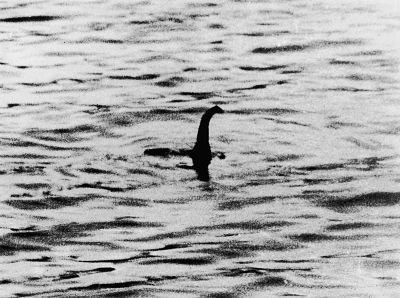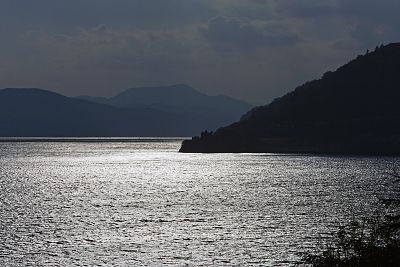While the legend of the Loch Ness monster goes back hundreds of years, the first modern sighting of Nessie was reported in 1933.
LONDON — The Loch Ness monster is no monster, but if it is any consolation it may be a big eel.
On Thursday, an international group of scientists that compiled the genetic profiles of living creatures in Scotland's mysterious Loch Ness said they had found no evidence that the fabled eponymous creature was lurking in the lake.
"We have no definitive evidence of a monster," said Professor Neil Gemmell of the University of Otago, New Zealand, who led the study.
The Loch Ness monster, or Nessie for short, is one of Scotland's most enduring tales. Alleged sightings have given birth to stories of a prehistoric creature living in the loch.
But the team of researchers led by Gemmell analyzed the environmental DNA — or genetic material shed by all life in Loch Ness — from around 250 samples of water collected from the lake last year, and compared it to large databases of genetic sequences from known species.
The scientists did not find evidence of DNA sequences similar to those predicted to come from a large extinct marine reptile.
Speaking in Drumnadrochit on the western shore of Loch Ness, Gemmell told reporters the scientists found no reptilian DNA sequences, which makes him fairly certain that there is no "giant scaly reptile" swimming in the loch.
Scientists also explored the possibility of giant fish, such as catfish or sturgeon, being responsible for sightings, but Gemmel said that was a dead end too.
But the team did find a surprisingly large amount of eel DNA in the loch, he said.
Gemmell said eel can grow 4 to 6 feet in length, but reported Loch Ness sightings usually involve a much bigger creature. There is no way to tell how big these eels are from DNA evidence, he said.
"Is it a giant eel? I don't know, but it is something that we can test further," he said.
Gemmel did dangle the tantalizing possibility that the team had missed something.
"There well may be a monster in Loch Ness, but we didn't find it," he said.
While the myth of the Loch Ness monster goes back hundreds of years, the first modern sighting of Nessie as a "whale-like fish" was reported in 1933.
Since then, there have been thousands of alleged sightings, inspiring numerous books, TV shows and films, and attracting thousands of tourists hoping to catch a glimpse of the elusive monster.


